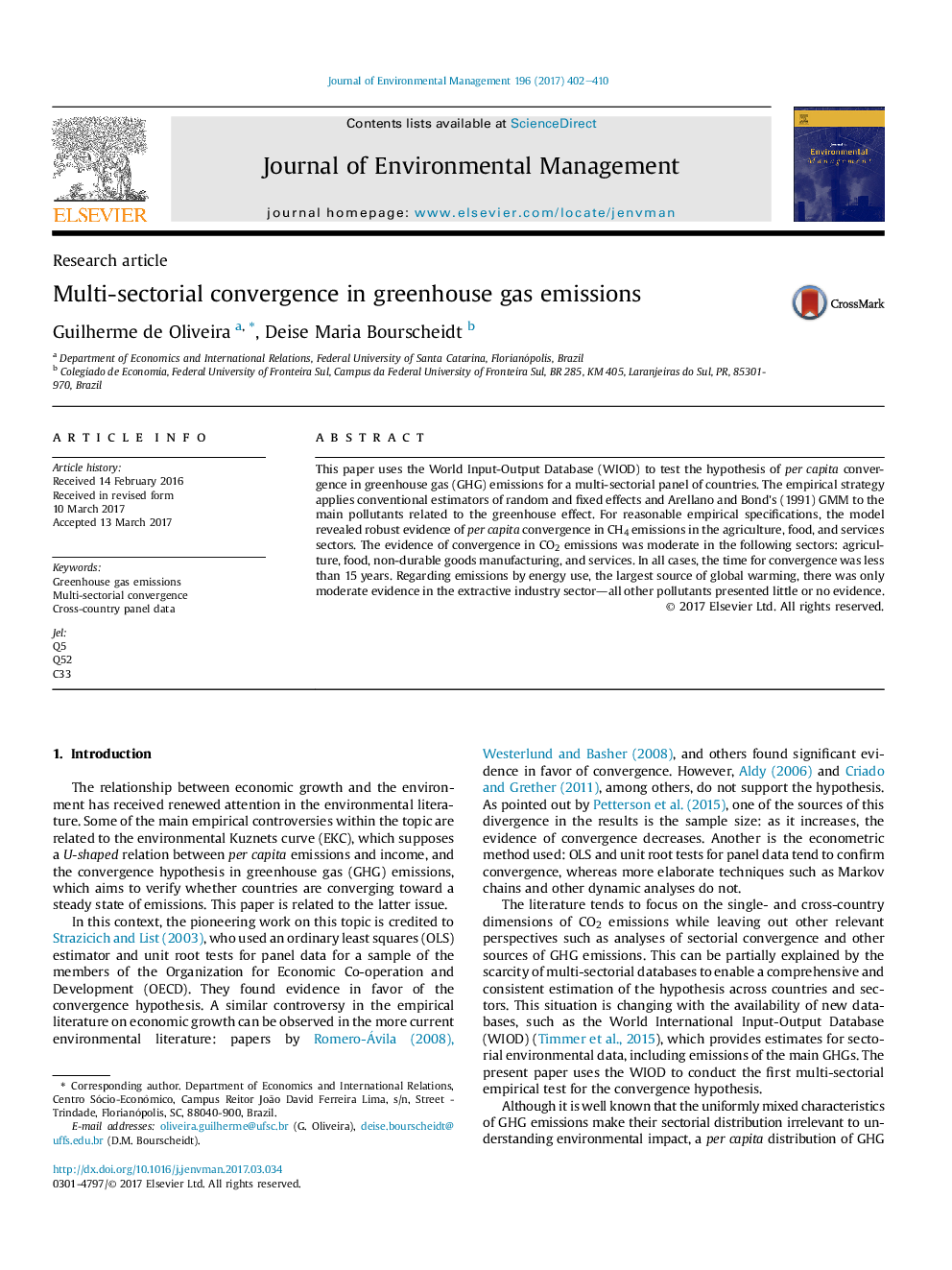| Article ID | Journal | Published Year | Pages | File Type |
|---|---|---|---|---|
| 5116682 | Journal of Environmental Management | 2017 | 9 Pages |
Abstract
This paper uses the World Input-Output Database (WIOD) to test the hypothesis of per capita convergence in greenhouse gas (GHG) emissions for a multi-sectorial panel of countries. The empirical strategy applies conventional estimators of random and fixed effects and Arellano and Bond's (1991) GMM to the main pollutants related to the greenhouse effect. For reasonable empirical specifications, the model revealed robust evidence of per capita convergence in CH4 emissions in the agriculture, food, and services sectors. The evidence of convergence in CO2 emissions was moderate in the following sectors: agriculture, food, non-durable goods manufacturing, and services. In all cases, the time for convergence was less than 15 years. Regarding emissions by energy use, the largest source of global warming, there was only moderate evidence in the extractive industry sector-all other pollutants presented little or no evidence.
Keywords
Related Topics
Physical Sciences and Engineering
Energy
Renewable Energy, Sustainability and the Environment
Authors
Guilherme de Oliveira, Deise Maria Bourscheidt,
